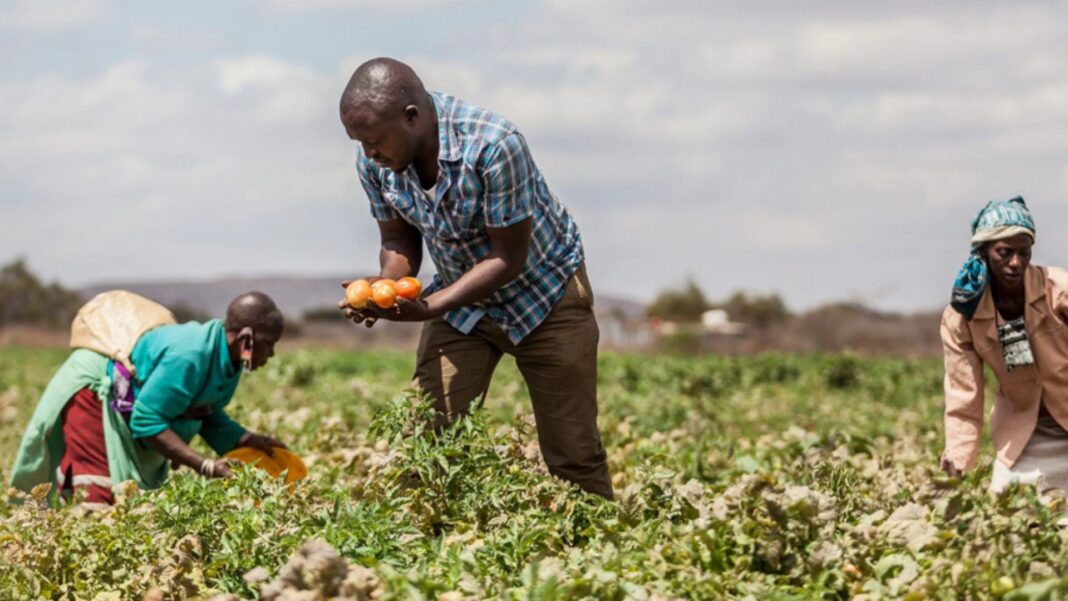Lesotho’s agriculture sector like many others globally is prone to severe challenges such as land degradation, limited land and water resources, increased weather variability and difficulty adapting to climate change, hence a need for postharvest management principles to minimise postharvest losses.
Kabelo Masoabi
In Lesotho, farmers can achieve improved welfare through increasing yields of major crops if they apply proper postharvest systems during and after the harvesting period.
Postharvest management determines food equality and safety, competitiveness in the market, and the profits earned by producers, Matching Grants Specialist with the Smallholder Agricultural Development Project (SADP) II, Mr Relebohile Khathibe explained.
From many studies and field observations over the past 40 years, it has been reported that 40–50 % of horticultural crops produced in developing countries are lost before they can be consumed, mainly because of high rates of bruising, water loss, and subsequent decay during postharvest handling (Kitinoja 2002; Ray and Ravi 2005).
Post-harvest management is a system of handling, storing, and transporting agricultural commodities after harvest. The importance of post-harvest management has been established over the years and it strengthens the action chain that produces, transports and processes food as well as other related products that give sustenance to the world population.
Postharvest management according to Khathibe allows the effective planning of how to sustainably manage finite resources for future use.
“Through effective postharvest management, action can be taken now so that the environment sustains future generations. During the postharvest period, handlers and producers focus on preserving the quality, quantity, and safety of the commodities.â€
Khathibe revealed that the quality of fresh produce is governed by many factors which when combined, effectively decide the rate of deterioration and spoilage.
“These factors, if not controlled properly, lead to postharvest losses on large-scale.
“Quality deterioration starts as soon as produce is harvested and continues until consumed or finally spoiled if not consumed or preserved. The success or failure of any business plan related to fresh produce is dependent on the management of factors affecting the quality,†he said.
Khathibe said decreased market value is another significant loss that occurs in fresh produce if postharvest is inadequate because fresh fruits and vegetables are living in nature.
“They complete the remaining life cycle after harvest and then naturally spoil. This character puts fresh fruits and vegetables in the category of highly perishable commodities. These changes in fresh produce cannot be stopped but can be slowed down within certain limits if the factors involved are controlled,†he said stressing the importance of increasing the shelf life and marketing period of fresh produce.
“The only important thing is to help maintain their quality during postharvest handling and increase durability,†he indicated.
The first step in the postharvest handling process he said is assessing maturity.
“You want to make sure you pick the crop at the appropriate stage and this means the pickers need to be properly trained on how to evaluate maturity,†Khathibe said pointing at digital resources that farmers can use to train their team.
“There are plenty of resources online that provide maturity guidelines with specific information for each crop, detailing the appropriate harvesting stages.â€
He explained that if the harvest is cracked, the crack creates entry points for microorganisms.
He recommended that the storage area is separate from the processing area and ensure that the working area is “properly sanitisedâ€, and that racks are away from walls to allow for cleaning and air circulation.
The specialist indicated that Lesotho’s problem is the lack of adequate infrastructure, proper knowledge, and the right technology.
“Poor handling also affects seeds and fertilisers and other important pre-harvest inputs which can easily go to waste if postharvest handling is not done properly.â€
For smallholder farmers, the lack of financial support can break their livelihood and a single year’s poor harvest can amount to a loss of decades’ worth of savings, but, The World Bank asserts that this can be avoided by placing secure and reliable postharvest systems.




